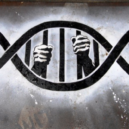QUANTUM MECHANICS AND CONSCIOUSNESS

During my early Superintendent of Police days, my sister, who lives in the USA presented me with a book written by Gary Zukav titled “The Seat of the Soul”. The book blew me away. Impatient to lay my hands on other books written by Zukav, I bought myself his first book, “The Dancing Wu Li Masters”. It was unlike the first book I had read. It turned out to be an unexpected introduction to quantum physics. I was a Microbiologist, and quantum physics was as alien to me as Mars. But the book did a decent job of clarifying quantum concepts to me in a manner comprehensible to a layman. While browsing the book, insights such as -why scientists cannot help but influence the outcome of experiments on sub-atomic particles, new assertions of consciousness creating reality and how subatomic particles partake in an unceasing dance of annihilation and creation similar to -Lord Nataraja’s dance of creation and destruction or image of the wheel of life depicted by Buddhism which symbolises the unending process of birth, death, and rebirth became apparent to me.
 During those days and even today, when one walks into a bookstore, it’s not uncommon to find titles with the term quantum in them. “Quantum mind”, “Quantum healing”, “Quantum habits” “Quantum mindset”, etc. It’s suddenly as though the quantum world is suddenly orchestrating each and everything in our lives.
During those days and even today, when one walks into a bookstore, it’s not uncommon to find titles with the term quantum in them. “Quantum mind”, “Quantum healing”, “Quantum habits” “Quantum mindset”, etc. It’s suddenly as though the quantum world is suddenly orchestrating each and everything in our lives.
But the role of quantum mechanics in consciousness first emerged as a theory in Germany during the 1920s when Erwin Schrodinger came with such an interpretation. Albert Einstein and Max Planck objected to such versions. When Einstein accused Niels Bohr of such an interpretation, he denied the same, suggesting it to be a misunderstanding. In 1961 Eugene Wigner composed an essay, titled “Remarks on the mind-body question”, proposing that a conscious observer played a fundamental role in quantum mechanics. However, things started to speed- up in the 1970s with the publication of “The Tao of Physics: An Exploration of the Parallels Between Modern Physics and Eastern Mysticism” by Fritjof Capra in 1975. The book’s first two parts exposited on ancient religions and modern physics. The third part tried to connect the two. It has been the third part, which has influenced many New Age champions to claim that quantum mechanics proves the reality of everything. Bringing out the same, New Age guru Deepak Chopra came up with his version of “quantum theory” that ageing was caused by the mind, which was put forward in his books. “Quantum Healing” (1989) and “Ageless Body, Timeless Mind” (1993). Most Physicists today are realists who have no doubts that quantum theory does not relate to consciousness.
In 2004, a film by the title “What the Bleep Do We Know!?” came along which dealt with a range of New Age ideas concerning quantum physics. Through a series of combined documentary-style interviews and computer-animated graphics, it tried to make a spiritual connection between quantum physics and consciousness. The movie was based on the fictional story of a photographer who encounters emotional and existential obstacles in her life, and eventually discovers that individual and group consciousness can influence the material world. The movie illustrated the uncertainty principle with a bouncing basketball being in several places at once. Some other contentions in the film which were challenged were the ability of the human mind to change the shape and structure of water molecules as popularised by Masaru Emoto, and the power of meditation to reduce violent crime rates, and the assertion that “consciousness is the ground of all being.” Many critics dismissed the film for its use of pseudoscience. I presume the assertions , as mentioned earlier were more in the realm of quantum mysticism while overlapping a great deal with quantum consciousness.
The quantum mind or quantum consciousness is a set of hypotheses that proposes that quantum mechanical phenomena, such as quantum entanglement and superposition, may play an essential part in the brain’s function and could form the basis for an explanation of consciousness.
Such a hypothesis first came together through the Copenhagen interpretation of quantum physics. The Copenhagen interpretation was mainly devised from 1925 to 1927 by Niels Bohr and Werner Heisenberg. This is one of the oldest of the many proposed interpretations of quantum mechanics. According to this theory, the quantum wave function collapses because of a conscious observer making a measurement of a physical system. However, Copenhagen says nothing about what exactly constitutes an observation. John von Neumann broke this silence and suggested that observation is the action of a conscious mind.
This interpretation of quantum physics sparked the Schrödinger’s cat thought experiment, showing some level of the absurdity of this way of thinking, except that it does completely match the evidence of what scientists observe at the quantum level. There have been many objections to the Copenhagen interpretation over the years. These include irregular jumps when there is an observation, the probabilistic factor introduced upon inspection, the subjectiveness of needing an observer, the difficulty of defining a measuring device, and the requirement of invoking classical physics to describe the “laboratory” in which the results are measured. John Archibald Wheeler proposed one extreme version of the Copenhagen interpretation called the participatory anthropic principle, according to which the entire universe collapsed into the state which we witness specifically because there had to be conscious observers present to cause the collapse. Any worlds that do not contain aware observers, therefore, get automatically ruled out.
Physicist David Bohm used the term “implicate order” to express what he thought the fundamental level of reality could be like, because he believed that what is being seen is a broken reflection of an ordered reality since both quantum physics and relativity were incomplete theories. Bohm believed that consciousness was a manifestation of this implicate order and that attempting to understand consciousness purely by looking at the matter in space was doomed to failure.
Human consciousness is profoundly enigmatic; Being conscious is to have an awareness of who or what we are? But is there a way to explain our subjective nature of our inner life in scientific terms? The general assumption is that consciousness arises from complex computation among brain neurons which became manifest during evolution as an adaptation of living beings to the external environment.Contrary, to this spiritual masters, philosophers and scientists consider consciousness to be outward or woven into the universe.
Explaining human consciousness using quantum physics began with Roger Penrose’s 1989 book, “The Emperor’s New Mind: Concerning Computers, Minds, and the Laws of Physics.” In the book Penrose dismisses the claim of few that brain is akin to a biological computer. He argued that it is a sophisticated quantum computer whose computations instead of being on a binary system are in a superposition of different quantum states at the same time. Penrose ventured into the work of Alan Turing, who developed a “universal Turing machine” and argued that modern computers had certain limitations which according to him the brain didn’t have.
A recent theory called ‘orchestrated objective reduction’ (‘Orch OR’), suggests that consciousness is more like music than computation. According to Roger Penrose and anaesthesiologist Stuart Hameroff who collaborated to produce the (Orch-OR) theory, consciousness arose from quantum vibrations in protein polymers called microtubules inside the brain’s neurons. The vibrations that interfere, ‘collapse’ and resonate across the scale, control neuronal firings, generate consciousness, and connect ultimately to ‘deeper order’ ripples in space-time geometry. In January 2014, Hameroff and Penrose claimed that the discovery of quantum vibrations in microtubules made by Anirban Bandyopadhyay of the National Institute for Materials Science in Japan in March 2013 corroborated their Orch-OR theory.
Since humans are the only animals that can by word of mouth communicate their conscious experience, performing experiments to prove quantum effects in consciousness requires experimentation on a living human brain. Besides, a morally unacceptable practice by proponents of quantum mind theories involves the custom of using quantum mechanical terms to make the argument seem authentic, even when being aware that the terms are irrelevant. Such deceptive claims were, for instance-often made by Deepak Chopra. Chopra, who often used terms such as quantum healing or quantum effects of consciousness. According to Chopra, “quantum healing” cures any manner of ailments, including cancer, through effects that he claims are literally on the same principles as quantum mechanics. In his book Quantum Healing, Chopra concludes that quantum entanglement links everything in the Universe, and therefore it must create consciousness. Pronouncements like these about quantum mechanics point to a desire to misinterpret technical, mathematical terms like entanglement in terms of mystical feelings.
Finally, how does it matter whether quantum effects are at stake with neuronal computations in the brain? We already know, quantum mechanics play a part in the brain, in determining the shapes and properties of neurotransmitters and proteins, which is why drugs like heroin affect our consciousness. Quantum effects are there in our TV , computer, car etc but we are all oblivious to quantum effects. We are also connected to the earth and other planets by gravity but that does not mean that astrology is real. People say that they love quantum mechanics because they are into meditation or manifestation or for spiritual benefits but it doesn’t bring any more benefits than what gravity or planetary influences does for astrology.
Source from: epaper/deccanchronicle/chennai/dt:30.09.2019
 Dr.K. Jayanth Murali is an IPS Officer belonging to 1991 batch. He is borne on Tamil Nadu cadre. He lives with his family in Chennai, India. He is currently serving the Government of Tamil Nadu as Additional Director General of Police, Law and Order.
Dr.K. Jayanth Murali is an IPS Officer belonging to 1991 batch. He is borne on Tamil Nadu cadre. He lives with his family in Chennai, India. He is currently serving the Government of Tamil Nadu as Additional Director General of Police, Law and Order.


